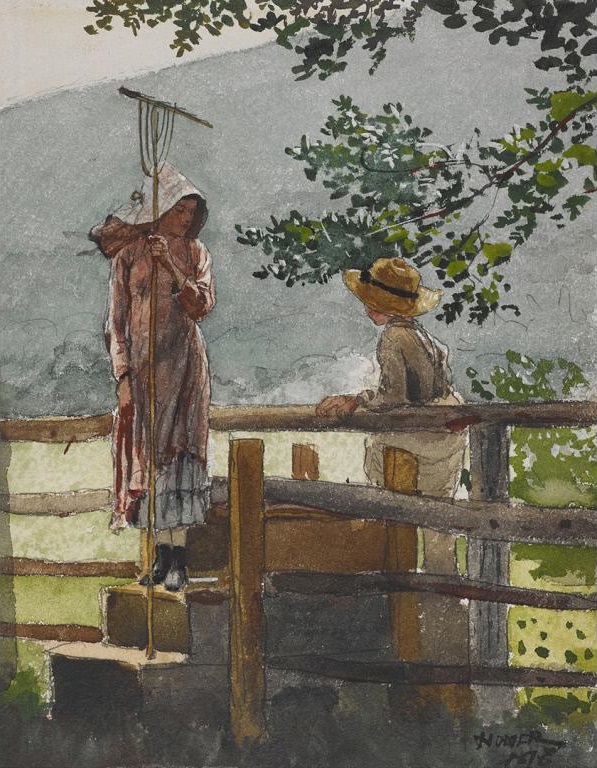Today is the birthday of Winslow Homer, born February 24, 1836. Crystal Bridges has six of Homer’s paintings in our permanent collection, five of which are works on paper, including Spring, 1878, watercolor and pencil on paper.
In the summer of 1878, Homer traveled to Massachusetts and upstate New York, including Houghton Farm, the country home of his friend and patron Lawson Valentine. Over the course of several visits to the estate that year and the next, the artist created about 50 watercolors, including Spring.
Watercolor played an important role in Homer’s art throughout his career. In the late 1850s and early 1860s, he frequently uesed thin, transparent washes to produce unified areas of monochromatic tone in the illustrations he created for Harper’s Weekly and other magazines. Homer began his first concentrated work in watercolor in the summer of 1873. Over the next five years he explored the medium’s expressive possibilities for a variety of subjects. . . . The theme of children in rural settings, however, predominated in his art during the second half of 1878 and 1879.
Although the identities of the children depicted in Spring are known—they were members of the Babcock family, farm squatters who lived near the Valentine property—such particulars were immaterial to Homer. Indeed, the artist appears to have been most interested in conveying the light and color of the scene and creating an air of silence. Silhouetted against a rural landscape with a high horizon, the girl and boy are posed to avoid eye contact with the viewer and each other. They inhabit separate spheres despite their pairing at the fence. . . .
In 1879, Homer exhibited Spring and 28 other recent watercolors at the twelfth annual exhibition of the American Watercolor Society. These images captured the critics’ attention as particularly original and American . . . Homer’s contributions to the exhibition were applauded for their “naturalness,” a quality that was viewed as uniquely American. Homer’s farm children, noted William Laffan of the New York Sun, were “wholesome” and “hearty,” and “full of that sense of dawning responsibility . . . that make[s] the seriousness of childhood so wholly inscrutable.”
Homer’s great facility with the transparent medium also contributed significantly to these works’ success. The suggestion of dewy, springlike moisture and the appearance of mottled light like that in the Crystal Bridges’ sheet, the result of pigment particles settling on the high points of the textured paper, suggested a “peculiar lightness, brightness, and clearness” that the writer for Frank Leslie’s Illustrated Newspaper and others found particular to the American landscape. Indeed, the combination of subject and style evident in Spring brought all the critics in agreement with Laffan, who wrote that Homer’s watercolors “should be considered apart . . .just as they stand in American art.”
Excerpted from the article by Margaret C. Conrads in Celebrating the American Spirit: Masterworks from Crystal Bridges Museum of American Art, edited by Christopher B Crosman and Emily D. Shapiro, Crystal Bridges Museum of American Art, in association with Hudson Hills Press, Manchester and New York, 2011.





